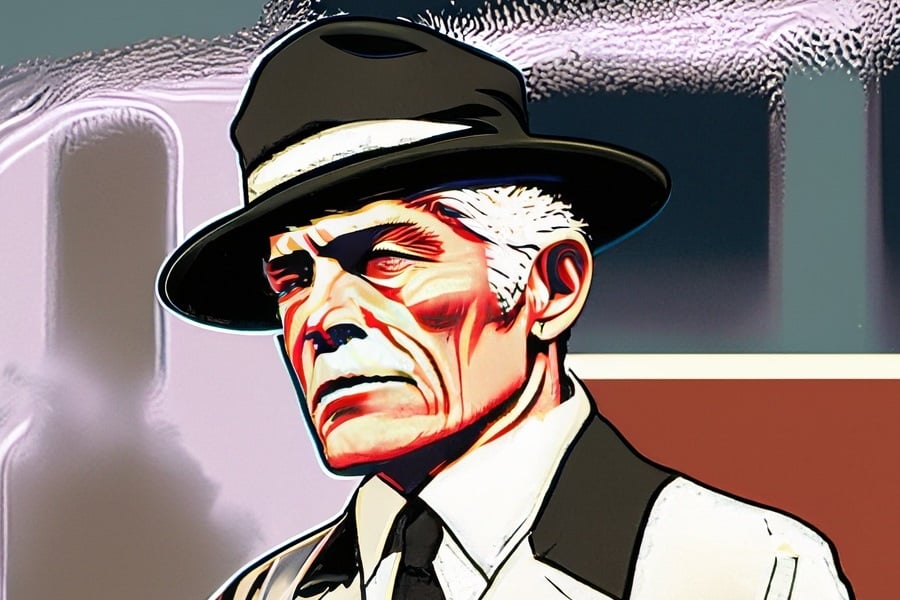
1960s Mysteries
The 1960s gave rise to a new wave of mystery fiction that captured the zeitgeist of the era. One of the most notable mystery novels set in the 1960s is James Ellroy’s “The Black Dahlia”. Published in 1987 but set in 1947, the novel tells the story of the real-life unsolved murder of actress Elizabeth Short, known as the Black Dahlia. Ellroy’s gritty and atmospheric style captures the seedy underbelly of Los Angeles and explores the dark side of the American dream. The book was adapted into a film in 2006, starring Josh Hartnett and Scarlett Johansson.
Another classic from the era is John D. MacDonald’s “The Deep Blue Goodbye”, featuring the character of Travis McGee. Published in 1964, the novel follows McGee, a self-described “salvage consultant”, as he investigates a series of burglaries in Florida’s affluent neighborhoods. The book’s themes of corruption and moral decay, as well as its focus on environmental issues, made it ahead of its time.
In 1963, Ed McBain published “The Mugger”, a police procedural featuring the detectives of the 87th Precinct. The novel explores the aftermath of a mugging that leaves a young woman dead, and delves into issues of race, class, and police brutality. McBain’s attention to detail and gritty realism set a new standard for crime fiction, and influenced generations of writers to come.
One of the most iconic mystery novels set in the 1960s is Dashiell Hammett’s “The Maltese Falcon”. Published in 1930 but set in 1928, the novel introduced the character of private detective Sam Spade and cemented Hammett’s place as a master of the genre. The book’s themes of greed, betrayal, and loyalty continue to resonate with readers today, and its influence can be seen in countless detective novels and films.
More recently, Attica Locke’s “Bluebird, Bluebird” (2017) takes place in East Texas in 2016, but its flashbacks to the 1960s show how the past continues to shape the present. The novel follows Texas Ranger Darren Mathews as he investigates the murders of a black lawyer and a white woman, and uncovers a web of racism, corruption, and secrets. Locke’s powerful exploration of race and identity, as well as her vivid evocation of the Texas landscape, make “Bluebird, Bluebird” a standout in the genre.
The 1960s gave us some of the greatest mystery novels of all time. From the classic hard-boiled detectives of Hammett and McBain to the contemporary thrillers of Ellroy and Locke, these books capture the spirit of the era and continue to entertain and captivate readers today.
Detectives of the 1960s
The 1960s was a decade of social upheaval and political turmoil, but it was also a time of great innovation and creativity in the world of detective fiction. From the classic hard-boiled detectives of the past to the new wave of mystery writers exploring themes of social justice and cultural change, the 1960s saw a rich and varied landscape of detective novels.
One of the most iconic detectives of the era was James Bond, the suave and sophisticated agent of MI6 created by Ian Fleming. The Bond novels, which began with “Casino Royale” in 1953 and continued throughout the 1960s, were a cultural phenomenon, spawning a series of films that remain popular to this day. Bond epitomized the glamour and intrigue of the Cold War era, with his gadgets, his fast cars, and his globetrotting adventures.
But Bond was not the only detective to capture the public’s imagination in the 1960s. Rex Stout’s Nero Wolfe, a brilliant and eccentric detective who solves crimes without leaving his New York City brownstone, continued to delight readers with his witty banter and intellectual prowess. And Agatha Christie, who had been writing detective fiction since the 1920s, continued to produce bestselling novels such as “A Caribbean Mystery” and “Hallowe’en Party”.
But the 1960s also saw the emergence of a new wave of detective writers who brought fresh perspectives and social awareness to the genre. Chester Himes, for example, explored issues of race and inequality in his “Harlem Detective” series, which included novels such as “Cotton Comes to Harlem” and “The Heat’s On”. Himes’s detectives, Coffin Ed Johnson and Grave Digger Jones, were tough and streetwise, navigating the complex social dynamics of the Harlem neighborhood where they worked.
Another influential writer of the era was Ross Macdonald, whose Lew Archer series explored the seedy underbelly of Southern California. Archer, like the detectives of the hard-boiled tradition before him, was a tough and cynical loner, but Macdonald infused his novels with a psychological depth and complexity that was new to the genre.
And of course, the 1960s gave us the iconic television detective Columbo, played by Peter Falk. Columbo, with his rumpled raincoat and trademark cigar, solved crimes through a combination of intuition, persistence, and wit. The show, which aired from 1968 to 2003, remains a beloved classic of the genre.
The 1960s may have been a time of change and upheaval, but it was also a time of great innovation and creativity in the world of detective fiction. From the suave and sophisticated James Bond to the gritty realism of Chester Himes and Ross Macdonald, the detectives of the era captured the spirit of the times and continue to captivate readers and viewers today.
Some Great Mysteries set in the 1960s
“The Spy Who Came in from the Cold” by John le Carré – This Cold War spy thriller, published in 1963, follows the story of Alec Leamas, a British spy who is sent to East Germany on a mission to bring down a Communist agent.
“The Silence of the Lambs” by Thomas Harris – This psychological thriller, published in 1988 but set in the late 1960s, follows FBI agent Clarice Starling as she tracks down the serial killer known as Buffalo Bill with the help of imprisoned cannibalistic serial killer Dr. Hannibal Lecter.
“Rosemary’s Baby” by Ira Levin – This horror novel, published in 1967, follows a young couple, Guy and Rosemary Woodhouse, as they move into an apartment building with a dark history and become entangled in a cultish conspiracy involving their unborn child.
“The Long Goodbye” by Raymond Chandler – This hardboiled detective novel, published in 1953 but set in the 1960s, follows the story of private investigator Philip Marlowe as he investigates the murder of a friend and gets caught up in a web of corruption and betrayal.
“A Caribbean Mystery” by Agatha Christie – This mystery novel, published in 1964, follows the story of Miss Marple as she investigates a series of deaths at a tropical resort in the Caribbean.
“The Laughing Policeman” by Maj Sjöwall and Per Wahlöö – This police procedural novel, published in 1968, follows a team of Stockholm detectives as they investigate the murder of eight people on a city bus.
More Mystery Features
Locked Room Mysteries
Unraveling the Enigma of Impossibility
Whodunnit Mysteries
The spine-tingling genre that keeps readers on the edge of their seats
Mysteries of the 1970s
A Golden Era for Mysteries



